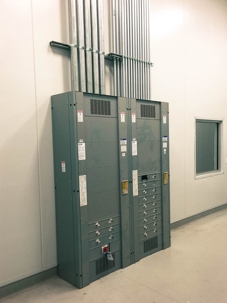Simply put, a surge current is a sudden spike and drop in voltage above what's normal or rated for that piece of equipment. Also called inrush current, this occurs most often when the device is first turned on. This can occur with both AC and DC circuits.
It is a pretty common phenomenon of certain types of electrical equipment like motors and transformers. When starting, this equipment will draw a brief surge of current many times the rated current of the equipment. Say a motor (75 hp) is supposed to draw 96 amps (an amp is just an amount of electrical flow). When it is first started it may surge up to 600 amps but quickly settle down to 96 amps or below. When I say briefly, I mean several seconds at most. That is surge current.
On certain projects, we have had requests to provide a piece of equipment with an inordinately large electrical system because of “surge currents.” I’ve heard this from equipment manufacturers, equipment reps, electrical contractors, electricians, etc. Where standard engineering would dictate one size, they are specifying a much larger size. What this means to you, the end-user is a dramatic increase in installation costs with absolutely no benefit, not to mention a potential code violation. The sad fact is that no one stands to gain anything from oversizing.
So why would this oversized system be requested? Pretty simple actually. I’m sure there have been horror stories of tripping breakers or blowing fuses and, once the dust cleared, terms like “surge currents” filtered down from above and became the real “reason” for the trouble. Their solution? Specify a larger system than warranted. What’s the downside? Nothing, except that you may pay a little more (actually a lot), but you want the machine and that’s the power it requires.
You may conclude from the above that 600 amps would be the reasonable circuit size for that motor, but this is where the trouble starts. Believe it or not, 600 amps is way above the National Electrical Code minimum and, in fact, would likely be a code violation as it would be too large to protect the motor wiring.
What is Surge Current Rating?
A surge current rating is the maximum amount of surge current that a surge protector will allow to pass before it restricts the flow of electricity. These devices are measured in kiloamperage (kA), and devices rated at 10kA (10,000 Amperes) are generally accepted.
Myth: Circuit breakers and fuses will trip or blow when the current exceeds their rating.
Truth: The vast majority of circuit breakers and fuses are designed to tolerate surge currents well above their ratings.
With rare exception, properly sized electrical wiring protected by properly selected fuses or circuit breakers will have no problem with these surge currents. Upsizing the wiring does nothing to improve the performance and only subtracts from your wallet.
Let’s put this into a dollars and cents perspective: Say the machine is 100’ away from the power source.
600 amp circuit @ $100.00 per foot = $10,000.00
150 amp circuit @ $24.00 per foot = $2,400.00
So just considering conduit and wire you save $7,600.00 by doing it correctly, per code, or you can spend the extra $7,600.00 to over size the system.
One last point: Who do you believe? Your vendor says one thing, this article says another, and your electrician maybe isn’t sure and just wants someone to specify a size. Well, with a $7,600.00 of potential waste I’d recommend finding out the truth for your self.
For more information, contact Southwest Industrial Electric today!

